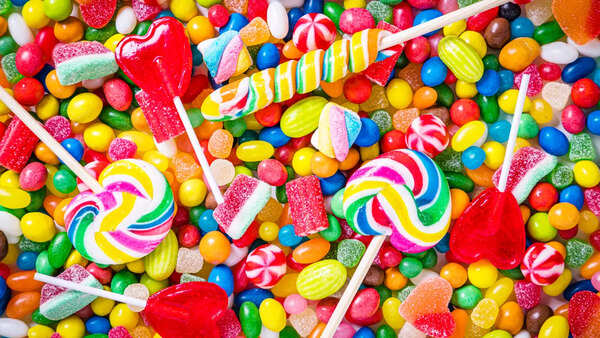While reading food labels is a good start, it's no longer enough to safeguard your health. Many seemingly harmless store-bought foods contain hidden ingredients that pose significant risks. From your morning cereal to your go-to protein bar, these everyday staples might be doing more harm than good.

Food dyes are prevalent in many products, from candies to flavored rice. These synthetic colors might make food visually appealing, but their impact on health is concerning. Artificial food dyes, such as Red 40 and Yellow 5, have been linked to neurobehavioral issues, especially in children, potentially increasing hyperactivity. The FDA has even banned Red No. 3 in the US due to its association with cancer, though it remains in use elsewhere.

Titanium dioxide is a chemical used to whiten foods like coffee creamers, candies, sunscreen, and toothpaste. However, the FDA categorizes it as a Group 2B carcinogen. The nanoparticles in titanium dioxide may trigger inflammation and oxidative stress.
Brominated vegetable oil (BVO) is an emulsifier used to stabilize citrus-flavored drinks, preventing flavor oils from separating. Studies suggest connections between BVO and neurological problems, thyroid dysfunction, and heart and liver damage. Although banned in Europe and the US, it remains in use in several other countries.

Potassium bromate is a flour additive used to strengthen dough in bread-making. However, the World Health Organization classifies it as a possible human carcinogen. This ingredient is banned in Europe, Canada, and other regions. Potassium bromate is a nephrotoxin in both animals and humans, and has been linked to kidney and thyroid tumors in animals.

High fructose corn syrup (HFCS), a sweetener commonly found in sodas and snacks, is a leading contributor to obesity and diabetes. Research indicates that HFCS intake disrupts metabolism, increasing fat storage and insulin resistance. From sugary beverages to processed foods, many products contain this ingredient.
Newer articles
Older articles
 Bezos-Backed Methane-Tracking Satellite Mission Ends Abruptly After Loss of Contact
Bezos-Backed Methane-Tracking Satellite Mission Ends Abruptly After Loss of Contact
 Africa's Rift Valley: Mantle Upwelling Fuels Volcanic Activity, Foretelling New Ocean Birth
Africa's Rift Valley: Mantle Upwelling Fuels Volcanic Activity, Foretelling New Ocean Birth
 7 Proven Habits to Nail Your Next Job Interview: Project Confidence and Authenticity
7 Proven Habits to Nail Your Next Job Interview: Project Confidence and Authenticity
 Smith Targets Test Return After Innovative Baseball Cage Rehab in New York
Smith Targets Test Return After Innovative Baseball Cage Rehab in New York
 5 Subtle Signs of Prediabetes You Shouldn't Ignore
5 Subtle Signs of Prediabetes You Shouldn't Ignore
 Oral Cancer: Know the Warning Signs, Risk Factors, and Why Early Detection is Key to Survival
Oral Cancer: Know the Warning Signs, Risk Factors, and Why Early Detection is Key to Survival
 Hair Oil vs. Serum: Which Elixir is Right for Your Hair Type? A Comprehensive Guide
Hair Oil vs. Serum: Which Elixir is Right for Your Hair Type? A Comprehensive Guide
 Blackcaps and White Ferns Face Packed Home Summer Against Cricket Heavyweights
Blackcaps and White Ferns Face Packed Home Summer Against Cricket Heavyweights
 Gambhir Defends India's Tailenders After Headingley Collapse; Cites Dropped Catches as Key Factor in Test Loss
Gambhir Defends India's Tailenders After Headingley Collapse; Cites Dropped Catches as Key Factor in Test Loss
 England Captain Stokes Lauds Duckett and Crawley for Blistering Start in Record Chase Against India
England Captain Stokes Lauds Duckett and Crawley for Blistering Start in Record Chase Against India